
The Red Orchestra was the name given by the Abwehr Section III.F to anti-Nazi resistance workers in Germany in August 1941. It primarily referred to a loose network of resistance groups, connected through personal contacts, uniting hundreds of opponents of the Nazi regime. These included groups of friends who held discussions that were centred on Harro Schulze-Boysen, Adam Kuckhoff and Arvid Harnack in Berlin, alongside many others. They printed and distributed prohibited leaflets, posters, and stickers, hoping to incite civil disobedience. They aided Jews and resistance to escape the regime, documented the atrocities of the Nazis, and transmitted military intelligence to the Allies. Contrary to legend, the Red Orchestra was neither directed by Soviet communists nor under a single leadership. It was a network of groups and individuals, often operating independently. To date, about 400 members are known by name.
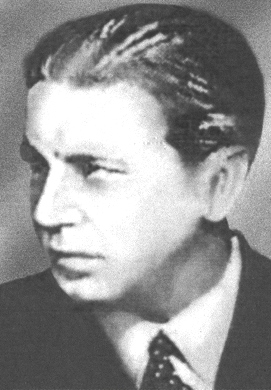
Rudolf "Dolf" von Scheliha was a German aristocrat, cavalry officer and diplomat who became a resistance fighter and anti-Nazi who was linked to the Red Orchestra.

Hans-Wedigo Robert Coppi was a German resistance fighter against the Nazis. He was a member of a Berlin-based anti-fascist resistance group that was later called the Red Orchestra by the Gestapo.
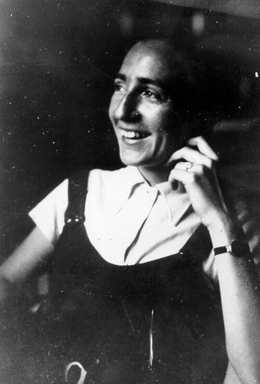
Betti Gertrud Käthe Hilda Coppi, known as Hilde Coppi, was a German communist and resistance fighter against the Nazi regime. She was a member of the anti-fascist resistance group that was later called the Red Orchestra by the Abwehr, during the Nazi period.

Mildred Elizabeth Harnack was an American literary historian, translator, and member of the German resistance against the Nazi regime. After marrying Arvid Harnack, she moved to Germany in 1929, where she began her career as an academic. Mildred Harnack spent a year at the University of Jena and the University of Giessen working on her doctoral thesis. At Giessen, she witnessed the beginnings of Nazism. Mildred Harnack became an assistant lecturer in English and American literature at the University of Berlin in 1931.

Heinz Harro Max Wilhelm Georg Schulze-Boysen was a left-wing German publicist and Luftwaffe officer during World War II. As a young man, Schulze-Boysen grew up in prosperous family with two siblings, with an extended family who were aristocrats. After spending his early schooling at the Heinrich-von-Kleist Gymnasium and his summers in Sweden, he part completed a political science course at the University of Freiburg, before moving to Berlin in November 1929, to study law at the Humboldt University of Berlin. At Humboldt he became an anti-Nazi. After a visit to France in 1931, he moved to the political left. When he returned, he became a publicist on Der Gegner, a left-leaning political magazine. In May 1932, he took control of the magazine, but it was closed by the Gestapo in February 1933.
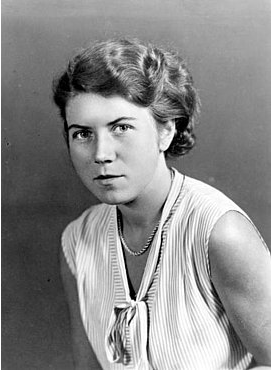
Maria "Mimi" Terwiel was a German resistance fighter against the Nazi regime. She was active in a group in Berlin that wrote and distributed anti-Nazi and anti-war appeals. As part of what they conceived as a broader action against a collection of anti-fascist resistance groups in Germany and occupied Europe that the Abwehr called the Red Orchestra, in September 1942 the Gestapo arrested Terwiel along with her fiancée Helmut Himpel. Among the leaflets and pamphlets they had copied and distributed for the group were the July and August 1941 sermons of Clemens August Graf von Galen which denounced the regime's Aktion T4 programme of involuntary euthanasia.

Erika von Brockdorff was a German resistance fighter against the Nazi regime during the Second World War. Brockdorff was a member of what the Reich Security Main Office termed the Red Orchestra resistance movement.

Plötzensee Prison is a men's prison in the Charlottenburg-Nord locality of Berlin with a capacity for 577 prisoners, operated by the State of Berlin judicial administration. The detention centre established in 1868 has a long history; it became notorious during the Nazi era as one of the main sites of capital punishment, where about 3,000 inmates were executed. Famous inmates include East Germany's last communist leader Egon Krenz.

Helmut Roloff was a German pianist, recording artist, teacher and resistance fighter against the Nazi regime. In September 1942 Roloff was arrested in Berlin in the roundup of an anti-Nazi resistance group allegedly at the centre of a wider European espionage network identified by the Abwehr under the cryptonym the Red Orchestra. Covered by comrades who persuaded their interrogators that his contact with the group had been unwitting, he was spared execution and released. In post-war West Berlin, Roloff taught at the Academy of Music. After serving as the school's director, he retired in 1978.
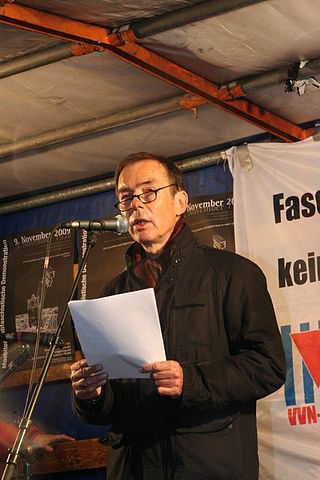
Hans Coppi Jr. is a German historian. His parents, Hilde and Hans Coppi, were active in the German Resistance and were both executed by the Nazis.

Ilse Frieda Gertrud Stöbe was a German left-wing journalist, Soviet GRU agent and anti-Nazi resistance fighter. As a young women, Stöbe was exposed to communist ideology through her parents. After her parents split up, she had to leave the Rathaus grammar school she was attending and trained as a typist.

Margaretha "Greta" Kuckhoff was a Resistance member in Nazi Germany, who belonged to the Communist Party of Germany and the NKVD spy ring that was dubbed the Red Orchestra by the Abwehr. She was married to Adam Kuckhoff, who was executed by the Third Reich. After the war, she lived in the German Democratic Republic, where she was president of Deutsche Notenbank from 1950 to 1958.
Erich Ziegler was a German politician and resistance activist. He was active in the "Heinz Kapelle Group" during the 1930s. After the war, Ziegler was a prominent leader of the Socialist Unity Party of West Berlin (SEW).

Ruthild Hahne was a German sculptor. Her most productive phase coincided with the early years of the German Democratic Republic.

Heinrich Scheel was a German left-wing historian and longtime vice president of the East German Academy of Sciences and professor of modern history at Humboldt University of Berlin. Scheel was notable for putting forward a theory of the German radical at the time of the French revolution, in an attempt to determine an alternative tradition in Germany. Scheel was most notable for being a German resistance fighter against the Nazi regime, during World War II. He was a member of a Berlin-based anti-fascist resistance group that was later called the Red Orchestra by the Abwehr, during the Nazi regime.
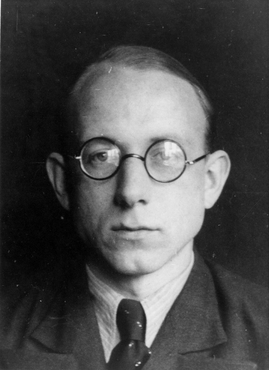
Karl Behrens He was a design engineer and resistance fighter against Nazism. Behrens was most notable for being a member of the Berlin-based anti-fascist resistance group, that was later called the Red Orchestra by the Abwehr. Behrens acted as a courier for the group, passing reports between Arvid Harnack and Hans Coppi who was the radioman. Behrens was also active in a resistance group at the AEG turbine factory power together with Walter Homann and others.

Fritz Thiel was a German precision engineer and resistance fighter against the Nazi regime. He became part of a Berlin-based anti-fascist resistance group during World War II, that was later named the Red Orchestra by the Abwehr. Thiel along with his wife Hannelore were most notable for printing stickers using a child's toy rubber stamp kit, that they used to protest The Soviet Paradise exhibition in May 1942 in Berlin, that was held by the German regime to justify the war with the Soviet Union. The group found the exhibition both egregious and horrific; one exhibited photograph showed a young woman and her children hanged side by side. Thiel was executed for his resistance action.

Helmut Himpel was a German dentist and resistance fighter against Nazism. He was a member of the anti-fascist resistance group that was later called the Red Orchestra by the Abwehr. Himpel along with his fiancé Maria Terwiel were notable for distributing leaflets and pamphlets for the group. Specifically this included the July and August 1941 sermons of Clemens August Graf von Galen. The 2nd leaflet the couple posted, on Aktion T4 denouncing the murders of the sick by euthanasia, induced Hitler to stop the euthanasia murders and find other ways to do it.
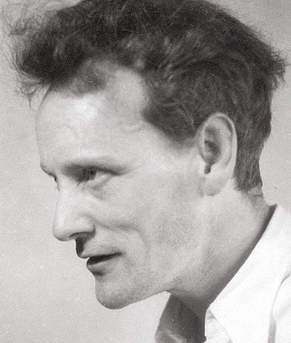
Wilhelm "Willy" Schürmann-Horster was a German actor, dramaturge, and director, who was a marxist and dedicated communist, and who became a resistance fighter against the Nazis. As a young man, Schürmann-Horster trained as an actor at the Düsseldorf Drama School. During the 1920s he worked in various acting troupes in theatres in the Rhineland. By the mid 1930s, he had become a communist and in 1934 and 1935 he was arrested for political agitation but acquitted for lack of evidence. After moving to Berlin in 1937, he met and became friends with Cay and Erika von Brockdorff. Through them, a discussion group of like-minded friends was formed who openly discussed current affairs and Schürmann-Horster became their spokesman. Through contacts in the group, connections were made with a resistance organisations that was run by Harro Schulze-Boysen and Arvid Harnack in 1940. Although Schürmann-Horster wasn't a physical resistance fighter in the cast of Harro Schulze-Boysen, he was an intellectual opponent of the Nazis who displayed his convictions on the stage and as a result never took part in any of the operations that his friends undertook. After falling ill in 1941, Schürmann-Horster moved to Konstanz where he worked as a dramaturge at the Grenzland Theatre. In October 1942, he was arrested and sentenced to death for "high treason", "dissemination of illegal writings" and "aiding and abetting the enemy" by the 2nd senate of the Volksgerichtshof. He was executed in Plötzensee Prison on 9 September 1943. He was described by his close friend, the communist trade unionist Rudy Goguel in the daily newspaper Südkurier as


















